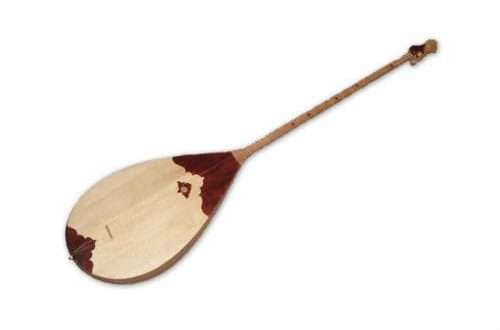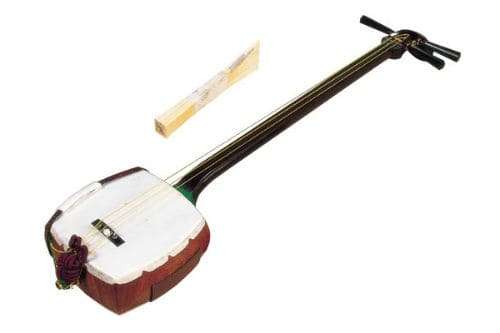
Shamisen: description of the instrument, composition, history, sound, use
Music plays a central role in Japanese national culture. In the modern world, it has become a symbiosis of traditions that came to the Land of the Rising Sun from different countries. Shamisen is a unique musical instrument played only in Japan. The name translates as “3 strings”, and outwardly it resembles a traditional lute.
What is shamisen
In the Middle Ages, storytellers, singers and blind wandering women played on the streets of cities and towns on a plucked string instrument, the sound of which directly depended on the skill of the performer. It can be seen in old paintings in the hands of beautiful geishas. They play mesmerizing music using the fingers of their right hand and a plectrum, a special device for striking the strings.
Sami (as the Japanese affectionately call the instrument) is an analogue of the European lute. Its sound is distinguished by a wide timbre, which depends on the length of the strings. Each performer adjusts the shamisen for himself, lengthening or shortening them. Range – 2 or 4 octaves.

Tool device
A member of the plucked string family consists of a square resonator drum and a long neck. Three strings are pulled on it. The neck has no frets. At its end is a box with three long pegs. They are reminiscent of the hairpins used by Japanese women to decorate their hair. The headstock is slightly bent back. The length of the sami varies. A traditional shamisen is about 80 centimeters long.
Shamisen or Sangen has an unusual resonator body structure. In the manufacture of other folk instruments, most often it was hollowed out from a single piece of wood. In the case of the shamisen, the drum is collapsible, it consists of four wooden plates. This simplifies transportation. The plates are made of quince, mulberry, sandalwood.
While other peoples covered the body of stringed-plucked instruments with snake skin, the Japanese used cat or dog skin in the manufacture of shamisen. On the body under the strings, a coma threshold is installed. Its size affects the timbre. Three strings are silk or nylon. From below, they are attached to the rack with neo cords.
You can play the Japanese three-stringed lute with your fingers or with a bati plectrum. It is made from wood, plastic, animal bones, tortoise shell. The working edge of the father is sharp, the shape is triangular.
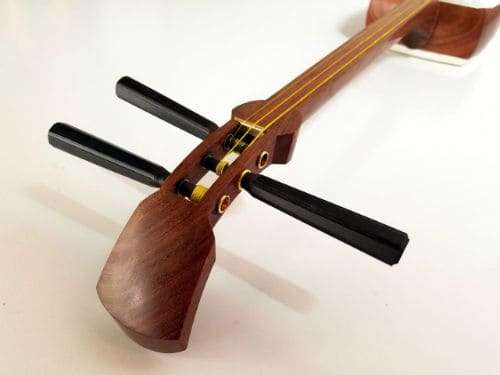
History of origin
Before becoming a Japanese folk instrument, the shamisen made a long journey from the Middle East through all of Asia. Initially, he fell in love with the inhabitants of the islands of modern Okinawa, later moved to Japan. Sami was not accepted by the Japanese aristocracy for a long time. The instrument was classified as “low”, considering it an attribute of the blind goze vagrants and geishas.
At the beginning of the XNUMXth century, the Edo period began, marked by the rise of the economy and the flourishing of culture. Shamisen firmly entered into all layers of creativity: poetry, music, theater, painting. Not a single performance in the traditional Kabuki and Bunraku theaters could do without its sound.
Playing the sami was part of the compulsory maiko curriculum. Each geisha of the Yoshiwara quarter had to master the Japanese three-string lute to perfection.
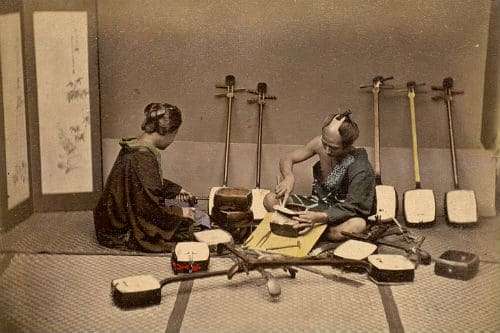
Varieties
Shamisen classification is based on the thickness of the neck. Sound and timbre depend on its size. There are three varieties:
- Futozao – traditionally playing this instrument has become familiar to the northern provinces of Japan. The plectrum is large in size, the neck is wide, thick. The performance of compositions on shami futozao is only possible for true virtuosos.
- Chuzao – used in chamber music, drama and puppet theater. The neck is medium in size.
- Hosozao is a traditional storytelling instrument with a narrow, thin neck.
The difference between different types of shami is also in the angle at which the neck is attached to the body, and the size of the fingerboard to which the strings are pressed.
Using
It is impossible to imagine the national cultural traditions of the Land of the Rising Sun without the sound of shamisen. The instrument sounds in folklore ensembles, at rural holidays, in theaters, feature films, anime. It is used even by jazz and avant-garde bands.
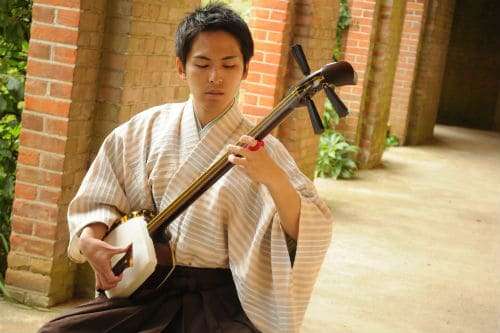
How to play the shamisen
A distinctive feature of the instrument is the ability to change the timbre. The main way to extract sound is by striking the strings with a plectrum. But, if the performer simultaneously touches the strings on the fingerboard with his left hand, then the sound becomes more elegant. The bottom string of the savary is of great importance in the performing arts. Plucking it allows you to extract a spectrum of overtones and a slight noise that enriches the melody. At the same time, the voice line of the narrator or singer should coincide as much as possible with the sound of the sami, slightly ahead of the melody.
Shamisen is not just a musical instrument, it embodies centuries-old traditions, the history of Japan, and the cultural values of the people. Its sound accompanies the inhabitants of the country from birth to death, gives joy and sympathetically melodious in sad periods.



